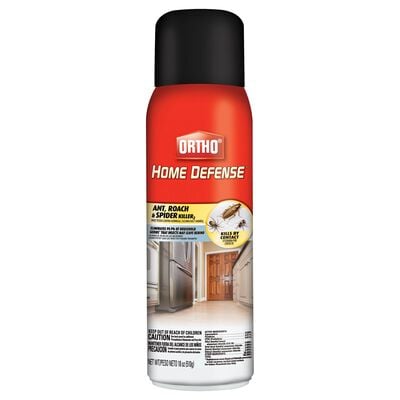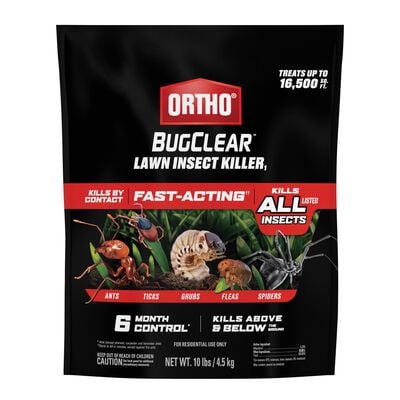
How to Identify & Control Scorpions
Learn how to identify and control scorpions.
There are close to 2,000 species of scorpions worldwide. In the United States, they are common in the South and Southwest. (There are more than 45 species of scorpions found in California and Arizona.) Scientists are not completely sure why, but scorpions are fluorescent under ultraviolet light.
What Are Scorpions?
Scorpions are arachnids and closely related to ticks, mites, and spiders. They have long, slender bodies, 8 legs (2 that are exaggerated pincers), and a 5-segmented tail tipped with a venom-injecting barb that can be arched over their back. Sizes vary by species, but most are about 1.5-2 inches long when fully grown. They range in color from yellow, blue, reddish brown, and black. A scorpion typically lives for 2-10 years.
A Scorpion's Habitat
While scorpions are most commonly thought of as desert dwellers, they can also be found in the mountains, deep caves, and boggy marshes. They are very adaptable and able to survive tropical environments, high temperatures, and very cold temperatures.
During the day, scorpions hide in shaded areas like under rocks, leaf piles, wood piles, logs, heavy vegetation, and the bark of trees. They enter our homes seeking water and shelter.
What Do Scorpions Eat?
Scorpions actively hunt at night. They eat insects, spiders, centipedes, earthworms, and other scorpions. Larger scorpions will occasionally feed on smaller lizards, snakes, and mice. They locate their prey primarily by sensing vibrations. When food is scarce, scorpions have the ability to slow their metabolism to survive on as few as one insect per year.
Are Scorpions Poisonous?
All scorpions are venomous but only a few species are considered poisonous to humans. They use their venom to paralyze and kill their prey and to defend themselves. A small, young scorpion has the ability to inject the same amount of venom as a full-sized adult. There are only 2 scorpion species in the U.S. that are considered dangerous – the stripebacked scorpion and the Arizona bark scorpion.
Stripebacked scorpion. This scorpion is 2.5 inches long and varies in color from yellowish-tan to brown. Its defining characteristic is 2 dark gray stripes that run the length of its back. Stripebacked scorpions are found in the south-central U.S. as far east as Tennessee and as far north as Illinois. Its sting can be extremely painful and potentially dangerous.
Arizona bark scorpion. This scorpion is 1.5 inches long and usually golden-yellow or very light brown in color with a slender tail and pincers. It is found in the Southwest U.S. The Arizona bark scorpion has a very painful sting and can be potentially lethal particularly to children and the elderly.
Scorpion Stings
While most scorpion stings are not dangerous, they can be painful nonetheless. Symptoms associated with a scorpion sting include a small red dot and localized pain or burning at the sting site, numbness, tingling, and minor swelling. To treat a scorpion sting, clean the area with soap and water and apply a cold compress. If a child or elderly person is stung, seek medical attention. If you or anyone stung experiences trouble focusing, blurry vision, dizziness, trouble swallowing, drooling, a swollen tongue, slurred speech, or muscle twitching, go to an emergency room immediately.
How to Control Scorpions
There are several Ortho® Home Defense® products available that can help protect your home, yard, and your peace of mind. If scorpions have entered your home, use Ortho® Home Defense® Ant, Roach & Spider Killer2 (which also controls scorpions) to kill the ones you see. To control scorpions in your yard, use Ortho® Bugclear™ Lawn Insect Killer1 to treat scorpions hiding in your landscape.
How to Prevent Scorpion Problems
The best way to protect your home from scorpions is to prevent them from coming inside in the first place. Create a barrier by applying Ortho® Home Defense® Insect Killer for Indoor & Perimeter2 around doors, windows, other entry points, and around the perimeter of your home. Then take these additional steps to help keep scorpions away from your yard and out of your home:
- Seal all cracks you find in your home's foundation or siding.
- Make sure your window and door screens do not have any tears in them.
- Replace worn-out weather-striping to seal any gaps around doors and windows.
- Keep your home free of other insect pests to eliminate scorpions' food source.
- Remove any debris, like leaf piles, stones, and woodpiles, and keep your lawn and landscape trimmed to eliminate their hiding places.


